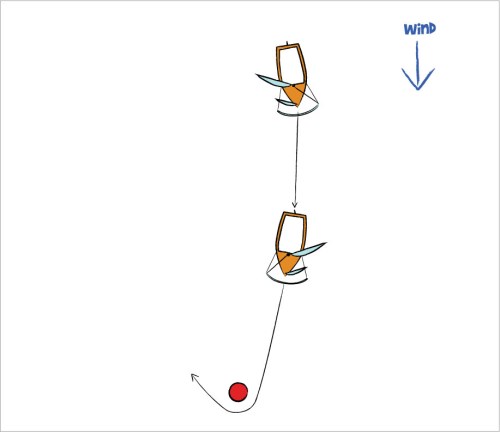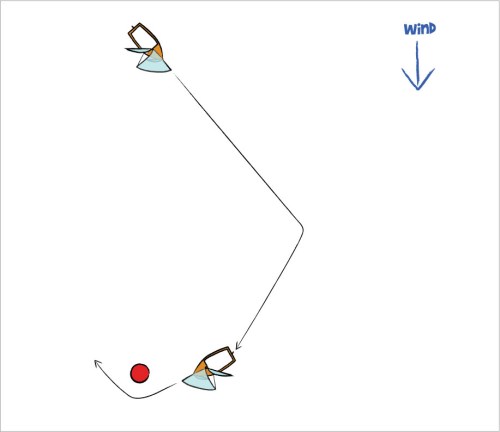Introduction to Spinnakers
Go To: Sailing - Techniques and Manoevres
Posted on 16 February 2009 18:34
Spinnaker sails are used to gain extra speed when sailing downwind. Find out what types are available, when you should use them, and how to use them in our series of article on spinnakers.
While all sail boats have a main sail and many have a jib/ Genoa, some have another sail known as a spinnaker, which can be one of two types; symmetric or asymmetric depending on the dinghy. Spinnakers are usually made out of a lighter, thinner material then the main or jib sail.
Traditional and older dinghies (such as the Wayfarer or GP14) usually have symmetric spinnakers (named because of their shape) which have to be hoisted by the sail being thrown out of the boat or pulled out of a chute and hoisted quickly. Symmetric spinnakers can only be sailed down wind or on a training run.

Diagram 1: Sailing downwind with a symmetric spinnaker
Asymmetric spinnakers have a flatter design and are used like a large jib or genoa for sailing on a fast reach rather than down wind, they are easier to launch, fly and retrieve then a symmetric and most modern dinghies such as the Laser 2000, RS 400 or Topper Magno now come fully equipped with an asymmetric spinnaker.

Diagram 2: Sailing downwind with an asymmetric spinnaker
Older design spinnakers have to be stored in a bag or pouch by the crew, and pulled out and thrown under the jib while the helm hoists it; newer spinnakers are usually stored in or under the deck in a fabric or moulded chute for easier launching and retrieval.
Spinnakers require a fair amount of experience to rig and handle, but are worth the effort – hey can give a tremendous speed boost, particularly in asymmetric design boats which go much faster when apparent wind sailing with the spinnaker up.
In our next article, we'll talk about asymmetric spinnakers - what they are, and when they're used.